Don't wanna be here? Send us removal request.
Text
The greatest (internet) show on Earth...
It’s been the talk of the town for the last month or so - taking the entire world by storm. A battle between two of the biggest heavyweights of internet history; a climb to the summit to be crowned the chief of content creation. This, is PewDiePie vs T-Series...

As how things go on the internet, this entire saga happened out of the blue, and pretty quickly. A race to hold the most subscribers out of ANY channel on YouTube - a very prestigious bragging right to hold. And no wonder this bout drew in a tremendous volume of traffic from all four corners of the world.
Felix Kjellberg, the Swedish gaming mastermind behind powerhouse channel “PewDiePie”, has established himself as an internet father-figure to many for a long while now - a profile who young, budding content creators should look up to. From his comedic, nonsensical creations, to the nitty-gritty “get-down-to-business” type of gaming walk-through videos, Kjellberg quickly developed a unique style of content creation, which made his persona and content attract a shed-load of attention, hence going viral. The numbers are actually mind-boggling and actually quite scary - as of today, PewDiePie holds 91.6 million subscribers, quite a distance more than the entire population of Germany. The Swede’s channel actually held the most subscribers on YouTube for a total of SIX YEARS (spanning between 2013 to February 2019), where another competitor was bold enough to step up to PewDiePie’s plate. Introducing T-Series.
T-Series took the approach to YouTube much differently, and it is safe to say that it has been a revelation - particularly for fans of Indian music and Bollywood. It aqctually has multiple smaller channels that it runs, however the main one picked up speed. It quickly became one of YouTube’s most viewed channels, and has since racked up over 91 million subscribers, you can see what will happen next. Both had similar numbers, and realistically there’s not enough space at the top of the YouTube summit for the both of them. Let the e-battle commence...
Both took this extremely seriously - pulling out all the stops to be crowned king of the video world. In PewDiePie’s corner, he sought the backing from other large YouTube personalities such as Logan Paul and Mr Beast, guys with over 36 million subscribers combined. In fact, the exposure was brought into the real world, with Mr Beast wearing a t-shirt printed with “Sub 2 PewDiePie” in the front row of Super Bowl 2019 - with the camera panning to him, exposing almost 100 million global viewers to his quest to help Kjellberg to victory. Just the other day, the UK Independence Party actually posted out a tweet in support of PewDiePie’s figjht to the top, showing that no matter the occupation, everyone has been picking sides for who they want to conquer the internet.
T-Series took a similar approach - seeking the support from celebrities much closer to home in comparison to PewDiePie’s massive spread. The subscriber counts became rocking back and forth, with the first, but brief dethroning of PewDiePie occurring on 9 March 2019. The battle started to heat up, with T-Series right on Kjellberg’s heels, a dedicated Wikipedia site with a comprehensive timeline of movements and overtakes was devised - mentioning the details such as the time of the day it occurred between and how many subscribers were gained or lost. This just shows how what seemed as a bit of a joke has turned into an ever-escalating bout that people are taking seriously for - they don’t want to see their favourite lose out. The biggest change happened on 27 March 2019 however, with the battle seemingly taken hold of by T-Series, who had held the lead for 3 straight days, taking over a 60,000 subscriber lead. As of the date of this post, it appeared that T-Series had run away with it.
While it seems to be all fun and games to attain the biggest subscriber count possible, there have been many implications and problems as it comes. Trolling has become a massive factor which has been suffered by both creators. Fans of PewDiePie have been labelled “the 9 year old army” because his style of video has attracted a youthful audience, which has been mimicked and deteriorated. The comments sections of both creators hold a spam of hate-fuelled replies and trolls who have seriously immersed themselves in what has been a relatively sound battle for the internet. “Diss tracks” that are music creations that seek to demoralise and humiliate one another had been released back and forth, which gives a sense that morals went completely out the window for this. Clickbait on YouTube from other content creators had become rife as people knew it would attract attention to gain views. All in all, it became an absolute mess.
So, with the battle apparently over (or so some think), it amazes me how much attention and interest events such as these can grab. It really does show the power of the internet when everything and everyone comes together (even if it to support a specific person), which goes to present its power and influence on people’s lives. But, I’d question whether this virality, albeit extreme, isn’t always so beneficial. I feel as if it’s events that aren’t serious and that important such as this one go absolutely everywhere, whereas the more crucial events that should be looked at, actually get swallowed and overlooked as they aren’t as internet worthy.
References:
https://en.wikipedia.org/wiki/PewDiePie_vs_T-Series
2 notes
·
View notes
Text
Has the world gone soft?
Social media has quickly solidified itself into our daily lives - young and old, it’s become almost essential. But, there has been a niggling issue with how people utilise it. In the real world, there are always different interpretations and reactions to events, however it’s been translated much more aggressively into the online world.
“Millennials” have grown up with social media integrated into their lifestyles from a relatively early age, so they’re already pretty good with this technology thing. But, it also means they’re exposed to everything social media has to offer - both the good and the bad. As a result, a split is formed between young people online when absorbing content - those that AREN’T offended by what they read and couldn’t care less, and those who ARE. The ‘Snowflakes’ of society who seem to get upset at the most miniscule things.

The most recent example of people taking offence, was over a young woman’s dress preference. Emily O’Connor was on her way (or so she thought) to sunny Tenerife, but was singled out by Thomas Cook flight staff, not because she was drunk or anything, but because of the way she was dressed - that it was offensive to other passengers. Straight away I’m thinking ‘how ridiculous, what did she actually do?’. Nope, it was true. Now, you’re hardly going to wear a Canada Goose jacket if you’re on your way to a sunny destination, because it just doesn’t make sense - so I immediately took her side of the argument, and Thomas Cook were wrong here. I also assumed that the majority of social media would take her side too - so I delved into the predictable mess of replies beneath her post. And boy how wrong could I be. Unbelievably, I found so much vicious abuse toward the young lady - so much unnecessary profanity. There were a lot of messages of support too, but it’s almost like the trolls just buried the positive posts of support. Yeah it’s not the most heavy-duty outfit in the world, we just don’t have time to be picking out small things like this. I get it’s all about opinions at the end of the day, but it was all very hypocritical - don’t get offended by something, just to throw abuse back. It really doesn’t work like that.

Now, this one is definitely up for interpretation - it’s a PR stunt that went very wrong, but on the face of things it seems harmless right? Obviously, Marks & Spencer don’t purposely go out of their way to trigger people, I just think the advertisers may see things differently to the rest of the world. Many were deeply offended with how women and men were portrayed in this shopfront advert in Nottingham, which sparked a massive sexism row, with campaigners particularly part of the Feminist movement expressing their discontent. From my point of view, this was a harmless selling ploy from M&S - all they’re trying to do is give partners options for Christmas presents. Unfortunately, it was open to interpretation. It had a deeper meaning that people read into. It hints that women “need” fancy knickers, whereas men, are fully-dressed to impress. Interestingly, this ties in very nicely with Emily’s case that was explored above, hinting that gender is a huge topic that sparks argumentative behaviour and offence on social media.
The way I see it, some people have too much time on their hands. Companies and people don’t actively go out their way to create hostile debates online, but it’s seemingly impossible to “get it right”. There will always be someone out there who will take offence to whatever is put out in the world, as everything is open to interpretation. It’s a very hard concept to manage. Though, you do wonder whether these “snowflakes” actually do it for the attention - reeling the hate in and feeding off it. It’s like poking an angry bear - antagonising people in a delicate situation to guarantee a reaction.
5 notes
·
View notes
Text
This post uses cookies to give you the best, personalised experience
When browsing a website for a first time, we are presented with a small, but very important message somewhere on the screen. Our impatient nature and livelihood means we just aren’t bothered to actually read what we’re inevitably about to accept, and the OCD in us causes an impulse just to get rid of what may seem as ‘clutter’ on the screen. But, this small, innocent looking message, actually holds a lot of information, particularly about you and your habits...
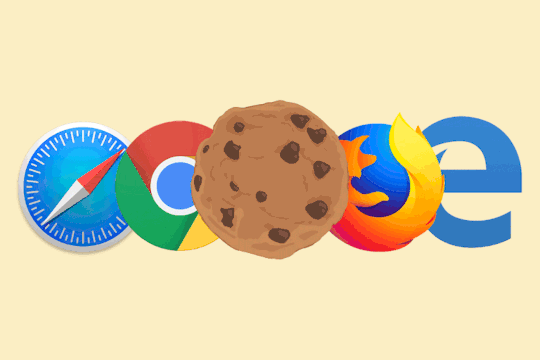
Read like a book
‘Cookies’ are mini text files that are downloaded onto your device, and to put it simply, they monitor your browsing habits on a particular website. Slowing down and taking this in, it seems like a bit of a creepy concept, and we’re wondering why we didn’t even consider reading the small print when originally accepting the “T’s and C’s”. But, they’re not there to fully stalk you, just for companies to ultimately improve your user experience (or so it seems). Welcome to the world of Surveillance Capital.
Since social media and technology has become such a staple in our daily lives, our blind acceptance of sites using cookies has caused our devices to understand everything we like and and what we particularly aren’t interested in. Amazon is the obvious example and probably the most effective employers of cookies on their website. I’m terrible with cables and wires, so I’ll always end up dashing straight onto Amazon to re-order my 136th iPhone cable. Because I frequently use Amazon for all my tech gear, it has been able to detect and predict what my browsing habits are, presenting a whole load of accessories on the first page. Obviously it’s convenient because I’m extremely impatient, but on the flip side, it’s a little bit concerning.
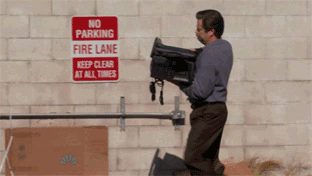
Should we be worried?
It ultimately depends on the person - the vast majority of us are probably fine with it since it personalises our experience of a website with our interests. It does make things a lot more convenient rather than having to re-filter and manually search for what we want. Cookies act as our servants in a way.
However, it’s quite concerning that a phone or computer (which really is just a load of plastic and metal thrown together), is able to track all your habits all because of one click of the big ‘ACCEPT’ button. It’s things like Google Maps being able to know where my house is or the route I took to Tesco which I’m not a massive fan of. It’s probably convenient if you’re in a hurry, but in the wrong hands this could be a massive issue.
References:
What are cookies? (2012). Retrieved March 23, 2019, from http://www.bbc.co.uk/webwise/guides/about-cookies
Images:
https://www.lifewire.com/enable-cookies-in-web-browser-4154881
1 note
·
View note
Text
What’s your role?
These days, we’re constantly looking to keep up with each other - letting people know what we’re up to, and social media has been the go-to place to do that. There’s nothing wrong with letting the world know about how brilliant your night out was or how you’re about to get a new job - it all seems pretty innocent and harmless right? Well, to some it is. As for others? It’s different.
Over time, the way we use social media has influenced our behaviours on it. As a result, we have self-assigned ourselves roles to essentially ‘play’. Particularly, the medium of group chats is an environment where these characters can heavily be seen. The virtual community has now got it’s own ‘cops and robbers’ style of governing which every user self-consciously contributes to. We’re about to delve into these who and what these characters are.
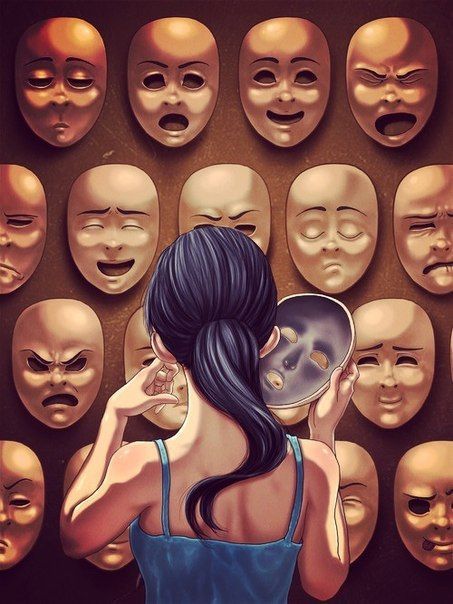
The Newbies
These are the common folk of the group - they are present and do participate in conversations, but they aren’t quite considered part of the big-dogs (yet that is). As a result, their personal opinions and posts may not have as much impact due to almost being near the bottom of the pile, therefore character may end up altering own views to even be appreciated by others who remain in a power-play position. Doing so looks to improve position and status, to potentially move away from being part of the commoners.
The Core (and the promotion to Admin)
Members of the core hold a much higher status than the Newbies. This group participates heavily in conversation and arguments, and they hold so much power and status that they can have a rather large influence on how the groups operate. Core members have the ability to use and in some cases abuse their power to alter and even violate the norms of social media etiquette - they therefore aren’t challenged or questioned by subordinates as they are afraid of offending face. Once you become a prevalent, respected Core member, you may even face the idea of promotion to the godly status of Admin. The controllers of all from above. See something you don’t like or annoys you? You have the power to eliminate that straight away.
The Lurkers
This group presents a different stance altogether, that appear at the other end of the spectrum in comparison to the Core. Lurkers do exactly what it says on the tin - they are there, but not there, if you know what I mean. They are present in conversation but don’t necessarily participate. In other cases they aren’t present at all, which is where the term ‘ghosting’ has been newly born - an example would be reading a load of messages and not replying (been there, done that. We all have). It’s particularly easy to be a Lurker in group chats since there are a number of participants, therefore there will be a number of topics of conversation that will arise that one may not be interested in - that may explain why Lurkers are so prevalent in this context. It’s much easier to slip under the radar when conversation topics aren’t of a participant’s key interests.
The Disruptors
For me, the most obnoxious group in the world of Computer Mediated Communication. This group seeks to be annoying and get on your nerves - it’s unfortunate but difficult to police. Within this group, there are sub-groups that have been formed as a result of its obnoxiousness.
The most common form of Disruptor nowadays in the Troll. They probably do look like those dolls with crazy hair and infinitely laughing faces because their ‘job’ is to entertain themselves by deteriorating others. It begins with hate comments, followed by a retaliation of the Troll’s victim. And that’s all there is to it really - Trolls feed off of retaliations and reactions, and it’s difficult not to since it’s in our nature to fight back. Trolls tend not to understand the consequences of what they are doing on the other side of things, and it’s why social media has been heavily criticised for stemming causes of depression among young people - it’s ultimately very hard to ignore such abuse.
Pimpers are those that self-promote all their work for a personal gain. ‘Shamelessness’ defines this group. For the majority of the time, it’s pointless things like ‘can you make sure to like my latest Instagram post’, something along those lines. Sometimes I’ll look into the group chat and see an Instagram link on its own posted by one of my oldest friends, expecting everyone to do the honours. It’s like everyone is programmed to like it instantly. However, it’s the largest media influences in the world that have caused this vanity to grow upon us, so it’s not necessarily raw vanity.
And now, the most annoying form of Disruptor - the Spammer. It’s all about attention for this group, and 90% of the time it’s useless, mindless spamming for no important reason. I have one friend in the group chat who knows no limits, spamming texts, photos, voice messages - the whole lot. It even rubbed off onto several others who simultaneously contributed to this act of sin. This is another one where they feed off retaliation, but again it’s ridiculously hard to ignore. WhatsApp has a setting which automatically saves photos sent to you - I once had this devil setting checked, and immediately regretted this. I had returned to the group chat with over 150 photos (90% worthless, unfunny memes) which had filled the entire chat so I struggled to see previous messages, and filled my camera roll with pointless images that I didn’t care about. You can probably sense the frustration.
So what role do you play?
The ideal position you’d like to be in is part of the Core. It’s a solid area to be in, where your views are appreciated, and you’ll be respected generally as long as standard etiquette is followed. In fact, just avoiding being a Disruptor is a good place to be, because at the end of the day, no one likes an obnoxious, shameless, irrelevant, spamming troll.
1 note
·
View note
Text
ASMR - the latest internet craze with with a strange twist
It doesn’t take much for things to go viral on the internet nowadays, especially if it has a uniqueness to it. And this new craze is no exception. ASMR, or Autonomous Sensory Meridian Response, is a relaxation method that causes ‘tingles’ from the back of the head that makes way along the spine. It is said to aid insomnia, anxiety and even depression. Pretty bold statement. How is it achieved? Anything. Literally anything. From whispering, tapping plastic, ripping paper to eating some salad, these are just a few of the almost infinite methods used by its creators who share it onto the microcosm that is YouTube. Even streaming giant Twitch TV has its own dedicated sub-section for people to ‘perform’ live. As it has been given the platforms, it attracts attention. A lot of attention.
In a society where we’re all rushing around 99% of the time, there’s very little down-time to just chill out, and even if we do get that time, our mind still struggles to wind down. ASMR seeks to help with these issues, and the ever-updating feed of this genre leaves us spoilt for choice. You can tell it’s a popular category when you type ‘A’ in the search bar and it’s already suggested (behind Ariana Grande, of course).
A reason I believe it has been so successful in a relatively short time-span, is due to its convenience - a quick look on YouTube and the video lengths span from 15-45 minutes - a fairly short amount of time. The idea behind that is so you can watch before going to bed - it’s almost like putting your mind asleep before you do. Although, one of the most popular ASMR videos uploaded is over 3 hours long (!!!) and has NO TALKING whatsoever, acquiring a ridiculous 40 million views. A few years ago you’d be going nowhere if you uploaded a video to YouTube with no talking, and now you can casually rake in a few million views. It goes to show there’s definitely business in this.
YouTube usually requires your attention - videos generally need viewers to be watching to understand what’s going on. ASMR rubbishes that entire concept. It’s creators almost encourage viewers/listeners to not even watch or pay attention to what’s happening on the screen. Closing your eyes is supposed to enhance the experience of hearing someone spray something or crunching, and I think that’s why it’s a clever genre of video (or audio).
Having said all that, it seems that ASMR can do no wrong - it’s at the pinnacle of content creation. Well, it doesn’t sit will with everyone, and I fall into this category. A lot find it very uncomfortable to watch/listen to. Gathering by the reactions at the end of the lecture I can assume that the majority would agree. Having someone whispering to lull you does seem strange, and you can see why it’s a discomfort for some. You become too distracted and can’t actually relax because it’s so weird - negating the actual aim of the video.
At the end of the day, you’ll either love or hate it. I can appreciate that it utilises a predominantly interactive site for something that discourages interactions, but for me it doesn’t really hit the spot. I’d prefer a good massage or listening to music to unwind than have some random person on the internet whisper the most odd things into my ear.
3 notes
·
View notes
Text
How we became social media spoilt
When it comes to social media, we’re pretty spoilt for choice. So spoilt in fact, we’re in a constant balancing act every single day whereby we’re always switching between each one. But how did this come about? When did this all happen? Well we’re about to find out the short, but rather expansive history behind the rise in social networking.

The very early days of communication
While we tend to associate social networking the internet and websites, it’s still important to recognise that social media wasn’t always how we see it currently. For instance, the process of writing letters can be appreciated as a form of communication, which ultimately set the foundations for social networking today.
Years go by (a LOT of them), and while writing was an acceptable method of communication, times changed, and information needed to get across much quicker. Enter Leonard Gale, Alfred Vail and Samuel Morse (yes, the Morse Code man), some of the early developers of the electric telegraph in the mid-1800s. The telegraph revolutionised the sending of messages by using a combination of short and long dots and lines (known as Morse Code) that made up individual letters to form sentences, which was all sent across wired systems - pretty advanced for this period in time. Particularly, this piece of technology was critical in conveying information quickly between businesses, broadcasters and journalists during the war, which was huge in drawing attention to its practicality.
While there was nothing really wrong with the telegraph, convenience and speed came to the forefront once again, and it paved the way for one of the most iconic and practical pieces of technology ever created, the telephone. many inventors were fascinated with the idea of communication simply through wires, and used this idea to transform Morse Code communication into actual speech. A patent for the telephone was granted to Alexander Graham Bell on March 10 1876 (the credit is still hotly debated to this day), and one could send and receive information of the actual human voice over distances. Sadly, this marked the end of the telegraph due to the lack of sophistication it had on the phone
The next breakthrough
As per usual, we weren’t satisfied with what we had. Throughout the 1900s, this brought about another groundbreaking piece of technology that all of us use everyday, and paved the way for the internet itself - the digital computer. We could be here all day listing every development of the computer, but what the takeaway message here is that as more and more people got a hold of one, this allowed for the imagination and creativity to take over - and this was the birth of social media.
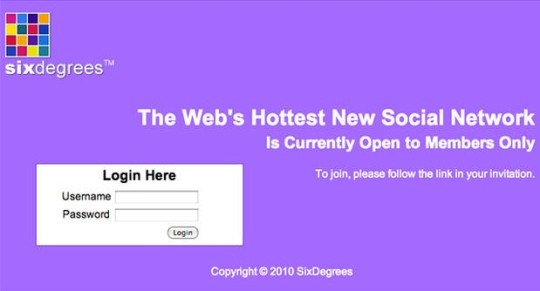
The birth of digital social media
With computer ownership continuously rising, there was a gap in the market in social communications. Presenting SixDegrees - officially recognised as the world’s first social media site. Launched in 1997, the site allowed users to build their profile by affiliating their schools and colleges. This further allowed its users to constantly develop a friends list that shaped a social network of people. However, the site was actually too far ahead of its time - the Internet was still a relatively new concept to people, networks were very limited and ultimately weren’t enough to keep it functioning, and was sold in 2000.
While the Internet kept on developing in strength, the whole concept behind SixDegrees opened potential doors to developing new websites fit for networking. Friendster, launched in early 2003, took a similar approach to SixDegrees regarding profile-building, but made it more personal, which encouraged extreme social networking by adding total strangers that have similar interests.
In 2004, arguably the biggest development in social media history arrived with the creation of Facebook. Originally for university students and partners, it opened its use to the general public just 2 years later, and it has blown up since. It’s fair to say Mark Zuckerberg has done pretty well with this. Although now the millennial generation may not utilise it as much, it was the major breakthrough in the area of social media - and it was done by combining elements of previous sites and adding much more for users - posting pictures, videos, individual and group messaging, poking??? (we all abused it) . It was well worth lying about being 13 for - I can vividly remember 10 year old me faking my birthday just to get in on the act.
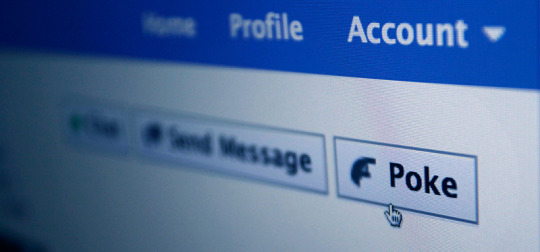
Then we have Twitter, another heavyweight that entered the fray in March 2006 - just before Facebook’s opening its doors to the public. Now I’m a fan of its ‘short but sweet nature’. It’s part of the reason I’ve been using it for all my news and interests since 2011. There’s too much pointless, unnecessary waffle on the internet, so why not limit what people can post in 140 characters? Though recently, Twitter has opted to double its limit to 280 due to complaints of 140 characters not being enough, but I’ve never found myself to come even close to the new ceiling. The developers have managed to find a happy-medium.
You can see that all these websites have a lot of similarities - they’re different, but post-oriented. This is where the keyboard was elected to be put away briefly. Instagram’s creation in 2010 placed the importance of images over text. Obviously messaging still exists on the side, but having a feed of purely images (with a little caption) gives it that unique cutting-edge over the rest where that isn’t the case.
Focusing on photos has been particularly useful in the development of Snapchat - the clever service focuses on both photos and messaging together. The catch is that the information deletes itself after opened (unless it is ‘screenshot’ which alerts the person on the other end). On a more public note, users can add a mixture of photos and videos to a story that can be viewed for a specific length of time until its gone. It’s pretty strange, but it’s definitely unique - and it’s probably why Facebook and Mr. Zuckerberg threw $3 billion at its owners to acquire it. That offer had been rejected, causing Facebook launch its ‘own’ knock-off version, which unsurprisingly failed (who would’ve thought it).
The balancing act
On paper it seems pretty overwhelming. If you looked at the applications on an average teenager’s phone, you’d see a dedicated ‘Social’ folder containing probably at least 6 social media apps. But the technologically-savvy population doesn’t struggle to keep up with every single one. We are constantly flicking backwards and forwards between each one, and never seem to get overwhelmed with the constant posting, Retweeting, liking, sharing, snapping...you get the picture.
There are definitely more platforms in the works for the very near future. With technology developing simultaneously, I wouldn’t be too surprised to see a platform incorporating the senses or 3D virtual reality that would bring networking online as close to real life as possible.
References
Hendricks, D. (2013, May 8). Complete History of Social Media: Then And Now. Retrieved from https://smallbiztrends.com/2013/05/the-complete-history-of-social-media-infographic.html
Morse Code & the Telegraph (2009, November 9). Retrieved March 1, 2019, from https://www.history.com/topics/inventions/telegraph
Then and now: a history of social networking sites. Retrieved March 1, 2019, from https://www.cbsnews.com/pictures/then-and-now-a-history-of-social-networking-sites/2/
4 notes
·
View notes
Text
Why do we see Emojis as cringeworthy?
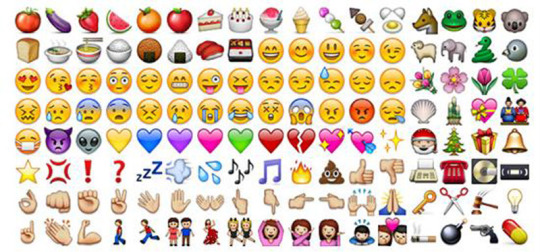
With technology dominating daily life, the art of conversation has additionally been heavily affected by the digital era. Not being able to show emotion through a few words on a screen allowed the simple, but extremely effective development of the emoticon - a device that all of us will have used at some point. It’s a great little thing to tag onto the end of your text just to show that extra bit of emotion that you may have experienced at the time. But one thing I’ve noticed recently, is that the use of emojis differs depending on the person, and for the millennial generation in particular, it’s not that worthy of too much use anymore.
It’s clearly been evident that the development of “the emoji” has been pretty big in a relatively short space of time. It really wasn’t that long ago that we were using a combination of punctuation marks to create a little figure resembling of a face, depending on your emotion. Now, according to Emojipedia (yes, there’s actually a dedicated database for every emoji ever created), as of June 2018, there are approximately 2,800 emojis to choose from, with another 230 due to be added shortly for 2019. There’s an emoji that shows almost emotion, interest, hobby, holiday - it’s really quite impressive. But from what I’ve been seeing recently, emojis are kind of growing out of fashion, especially in our generation which is both understandable and odd at the same time.
Imagine a graph containing age and emoji use - it begins with an increase as a youth, then dips during a young adult stage, then increases back again (well that’s how I’d imagine it to look like anyway). One thing I’ve been able to gather, is that we use emojis (the type and amount) differently depending on who we’re communicating with, and what our intentions are. Some posts on Instagram from the teenage generation tend to contain a caption constituting of just one emoji and no text in some cases. What I can understand from this, is that emojis are useful in delivering a clean and simplistic post as it’s most likely to be produced for people of similar age category. Heavy, extreme use is almost seen as childish and “cringeworthy”, hence why minimal emoji use is commonly utilised in our generation.
Where I see heavy emoji use is if you’re communicating to someone older than you, or to someone who you aren’t fully acquainted with yet. It’s seen as a marker of solidarity and unity, which was the intended goal of the original emoticon. Some of my older family members occasionally text and see how I’m getting on at university, and my use of emojis is considerably higher when I’m communicating. However, emoji use becomes virtually non-existent when I’m texting people in a similar age group - and that’s where the problem with social norms come in. We judge too much, I’ve even judged too much - teens that use a load of emojis non-ironically (which we’ll touch on shortly) can be seen as slightly bizarre.
After a quick browse on the old YouTube I came across this sarcastically explicit, but fairly relateable video that summed up a lot of my thoughts that I have on why emojis are pretty cringeworthy:
youtube
Despite emojis being less and less used by teens in a meaningful situation, I’ve seen instances on social media where emojis are “spammed” in a way which emphasises sarcasm. Particularly, emojis with laughter, the “Bon Appetit” hand gesture and fire emojis can be grouped together to create a heavily sarcastic response, strangely enough. Usually if there’s a post online which someone may not agree with, the 3 listed above are spammed together to pretty much create a “wow that was so funny...” response. It’s fairly ironic in a way - almost mimicking the way people that use emojis in a literal sense. It’s definitely a strange concept, that’s for sure.
So are emojis really cringe?
Ultimately, it’s down to the individual to decide that. And it really depends on who you’re communicating with. In more light-hearted and fun moments, the odd emoji (and this can be crucial) wouldn’t harm anyone - it’s just the over-use and abuse of them can seem a little irritating at times, in an already crammed online environment where we have to deal with enough information that’s in many ways useless.
References
Emojipedia: https://emojipedia.org/emoji-12.0/
7 notes
·
View notes
Text
Click here to claim your FREE boost in knowledge
The mass domination of technology over society has allowed for new and unique ways for key contributors to the marketing industry to sell themselves to the world. However, this has allowed creators to conjure up sly, cunning tactics to draw the average Joe in and take notice of their work - ‘clickbait’.
The concept is self-explanatory. We’re being baited into clicking hyperlinks through low-maintenance, but genius marketing strategies. The process of clickbait is a “piece of content that intentionally over-promises or misrepresents in order to pull users onto a particular website”*. The key take-away from this definition is the “intentional” lying and blagging of information to a consumer, purely to filter traffic through to a particular website or article. What’s striking is that the information on the other side, may not even match the proposed headline on the surface.

Reel ‘em in
For creators, they see us, the recipients of information, as fish waiting to be caught. We get lured into absorbing content, and it’s all thanks to the little strategy that is known as clickbait. Where I’ve found clickbait to be most prevalent is through online news articles - all news outlets do it, but I’ve found namely The Daily Mail and The Sun to abuse its power the most through their headlines specifically.
It really didn’t take long for me to find headline clickbaiting in action - just a couple minutes on The Sun’s Twitter feed was all it took.

In fairness, the headline is semi-accurate, but I think most of us can already gather that this can’t be the full picture. On an outside perspective, it seems as if that your 55p can guarantee that a snake will be named after your ex-boyfriend or girlfriend. For some, that would seem too good to be true. I for one knew there would be some sort of catch to it - there’s something they’re not quite revealing us. Even though I knew this wouldn’t be totally true, for the purpose of this post, I had to find out what this was all about.
Yeah, I did get clickbaited.
Your 55p is actually a donation to a Wildlife Conservation Fund in Australia which enters you into a competition to name a snake after your ex. So, you aren’t guaranteed anything, which the headline doesn’t make clear. Ypur only option to find out these minor details is to, well, click on the link - exactly what the creator wants. And that’s how companies such as The Sun are able to generate so much revenue. A few clicks escalates into thousands, all because of minor details (or lack of them).
YouTubers’ best friend
YouTube has been growing so quickly for a number of years now, and content creators, now knows as ‘YouTubers’ are setting the standard for videography and editing. Opportunists have seen the market in content creation on YouTube, and the monetization aspect alongside it has been a key driver in influencing its growth. With that being said, I’ve found clickbait to be the most effective and prevalent on YouTube, and many creators have no shame in admitting in utilising this practise.
YouTube has become a part of my daily routine. It fills in points in my day that where I’ve not got much to do. Naturally, I’ve logged so many hours just dossing on it, that I’ve come across infinite amounts of video titles that are outright ridiculous, that I don’t bother watching because the content won’t be reflective. In doing so, I’ve noticed that the term ‘and this is what happened’ is one of the most effective phrases in titles to generate clicks.

Yeah, it’s an easy and effective clickbaiting strategy...annoyingly effective in fact.
It doesn’t matter what type of video it is - 24 hour challenge to gaming, as long as you get the sacred phrase in the title, you’re good to go. Boom. Easy views. You’re in the money. It triggers a psychological impulse that’s almost impossible to resist - it’s hard not to be left on a cliffhanger. As humans we’re always intrigued and curious, and that’s why this strategy of clickbait is so successful.
The concept of clicks = money on YouTube has also led content creators to pretty much not care about what they’re producing, especially if they already have a loyal subscriber count which guarantees views. For the most part creators enjoy producing high value content - Casey Neistat is one of the best examples of a creator who produces uses the monetary incentive to encourage him to make outstanding productions. That’s the way YouTube should be done. It’s unfortunate that clickbait has now become a top priority for money generation over the creative side to videography.
Can it be stopped?
To put it simply, probably not. It’s too powerful of a tool, and despite the population becoming more and more savvy with understanding the deeper meaning behind the hidden elements of the internet, it still manipulates psychology. The human race was born to be curious.
However, actively clicking on content is down to the user. It’ll be a huge challenge to boycott viewing content that may not be fully truthful, but it is a potential starting point to begin the fight against clickbait.
References:
*Riggins, N. (2017, July 24). What is Clickbait and Why Should You Be Careful Using It to Promote Your Business? [Blog Post]. Retrieved from https://smallbiztrends.com/2017/07/what-is-clickbait.html
7 notes
·
View notes
Text
Living life through a screen
Whether you like it or not, social media is everywhere. It’s very rare in this day in age that you will come across an individual without using some form of social media platform. The global population stands at approximately 7.7 billion - of that, over 3 billion people have been found to use social media platforms ranging from Facebook, Instagram and Twitter (and more of course)*. The monumental rise of these technologies have been groundbreaking on a logistic level, but on a more personal level, they can be heavily degrading.
For me, social media is consuming the way we live our lives. While the developments have made communication between people, companies and more so rapid, social media has almost become too central to our lifestyles. On mental and physical levels, it isn’t healthy. We’re essentially living in our devices - phones, tablets, PCs. The lot.
I look at social media as a whole like it’s a bar of chocolate. You enjoy the first few bits, you get addicted but have too much, then you feel a bit sick. It’s all about moderation - not letting it dominate your entire existence. Especially when it comes to priceless events that need to be experienced in the moment, instead of through a phone screen.
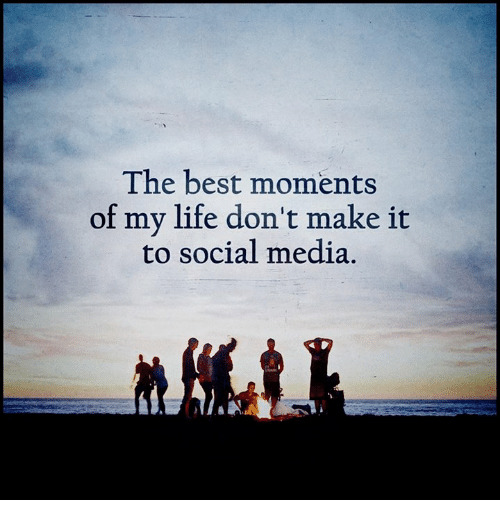
This quote has a symbolic background meaning, and I feel this needs to be more appreciated. Over the last few days, this quote has been at the centre of my thinking, and I’m not sure if it’s pure coincidence, but there have been a few instances where the message behind this quote has come into reality.
I’m a massive Spurs fan, and over the weekend we had an away trip to Fulham. It was 1-1 entering the final few seconds of play, and we scored with pretty much the last kick of the game to win 1-2. I was going nuts in the bar and I couldn’t imagine what the scenes were like at the ground itself. A friend from back home went to the game and texted me that it was one of the best experiences of his life - a priceless moment. He then went on to express his frustrations at multiple people a few rows in front of him on their phones just moments before the ball hit the back of the net. Seriously? If you really wanted to watch the game again, Match of the Day is on in the evening...It’s not a regular occurrence to see your team steal all the points in the last minute on another club’s own patch - surely raw emotions that are ingrained with you for life are more significant than a 10 second video of you celebrating that you plan to upload to Twitter?
My housemate, a huge fan of The 1975, had attended a concert of theirs at The O2 Arena in London over the weekend. They returned on Monday with bagfuls of merchandise - someone definitely enjoyed their experience. More interestingly though, they were impressed with a visual element of the show - a silhouetted figure of main singer Matty Healy on the “screen” of a phone. This is not the first time that Healy has been involved with technological barriers during his performances, with my housemate recalling the time the singer calling out crowd members that he wanted to see their face and not their phones before performing in 2016. He also gave out a passionate rant about experiencing the performance in the moment, pleading with the crowd that “the next 5 minutes will be far more potent than a f****** video on an iPhone”. If all this doesn’t reinforce the above quote, I don’t know what will.
So all in all, life is really too short to be messing around with technology. We don’t get too many opportunities to experience moments that will stay with us forever - there really can’t be a bigger value than raw emotion in that exact moment. Viewing these moments through a screen only fabricate the experiences, and of course, if you were watching events through a screen, were you really there?
References:
*Hatch, S. (2018, March 12). Be in the Know: 2018 Social Media Statistics You Should Know. [Disruptive Advertising]. Retrieved from https://www.disruptiveadvertising.com/social-media/be-in-the-know-2018-social-media-statistics-you-should-know/
17 notes
·
View notes